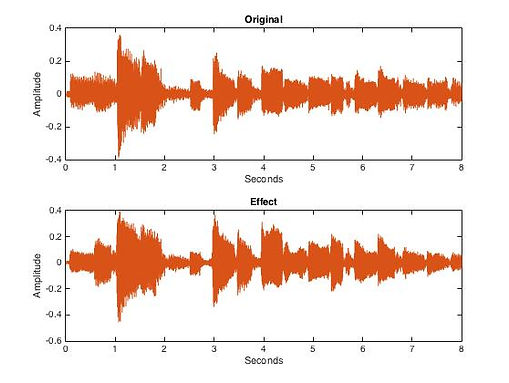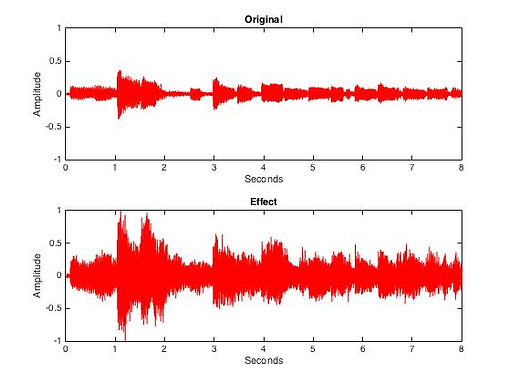DSP Audio Effects Project
Reverb
Reverb is an effect that simulates the sounds that are reflected off of objects in an enclosure in which a sound originates. When an instrument is played in a room, the sound it produces reflects off whatever surfaces are present and causes a delay effect. As time progresses, the amplitude of these reflections decrease as they are absorbed by objects in the enclosure. The attenuation and time delay of the reflected sounds can be changed to simulate different enclosure volumes and thus the overall sound of the effect. Unlike echoes, reverb occurs after a much smaller amount of time following the initial sound that is produced. The initial reflections, known as early reflections, are characteristic of the volume of the room. The late reflections, or diffuse reverberation, are more random and attenuate as they are absorbed by surfaces.
Our implementation achieves this effect by summing a number of shifted and scaled versions of the original signal. The parts of the signal that are shifted farthest from the original signal are scaled such that they are the smallest in magnitude, and consequently, they will have the smallest impact on the sound overall. Another approach that we found online uses a summation of comb filters with an allpass filter to combine them all. This is a frequency domain alternative to shifting the signal in time.
Our Implementation
Original
After Effect: Reverb
This effect is demonstrated using a short guitar piece titled cockershell_short.mp3 in our Project Files page. To apply the effect, run the audio file through the call_reverb function for implementation 1 and enter 50 when prompted for number of reverberations.
Reverb

Other Implementation
Original
After Effect: Reverb
To achieve the demonstrated effect, use the call_reverb function for implementation 2 using cockershell_short.mp3, and set reverberations to 50 when prompted. This algorithm was found online, and the website is included in our references page.
Reverb
